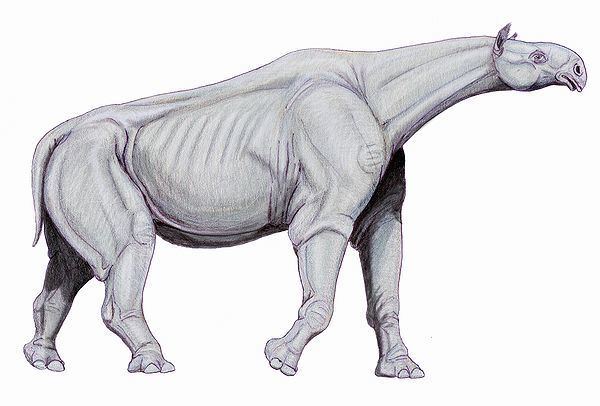Kingdom Animalia Phylum Chordata Rank Subfamily | Scientific name Indricotheriinae Higher classification Hyracodontidae Order Odd-toed ungulate | |
 | ||
Similar Near horn beast, Hyracodontidae, Odd‑toed ungulate, Juxia, Forstercooperia | ||
Indricotheriinae is a subfamily of Hyracodontidae, a group of long-limbed, hornless rhinoceroses convergently similar to the sauropod dinosaurs that evolved in the Eocene epoch and continued through to the early Miocene. The earlier hyracodontid species, such as Hyracodon were modest-sized, fast-running, lightly built animals with little similarity to modern rhinos. However, during the late Eocene and early Oligocene, the indricotherines evolved, and quickly grew to huge sizes. They flourished in the rainforests of a coastal region that became Kazakhstan, Pakistan, and southwest China, and lived further inland throughout central Asia as well.
The indricotherines reached the peak of their evolution from the middle Oligocene through to the early Miocene, where they had become truly gigantic animals, represented by the specialized genera Indricotherium and Paraceratherium (these genera may be synonymous, but several distinct species probably remain valid). These were some of the largest land mammals that ever lived, equaling the medium-sized sauropod dinosaurs in size. However, they remained confined to central Asia, which at the time was part of a large, lush lowland region. The collision with the Indian subcontinent and the Himalayan uplift led to global cooling, desertification, and the disappearance of forest habitats, which resulted in the extinction of these giant ungulates. Certain unidentified species may have lived in Mongolia, and many other places in Russia.
